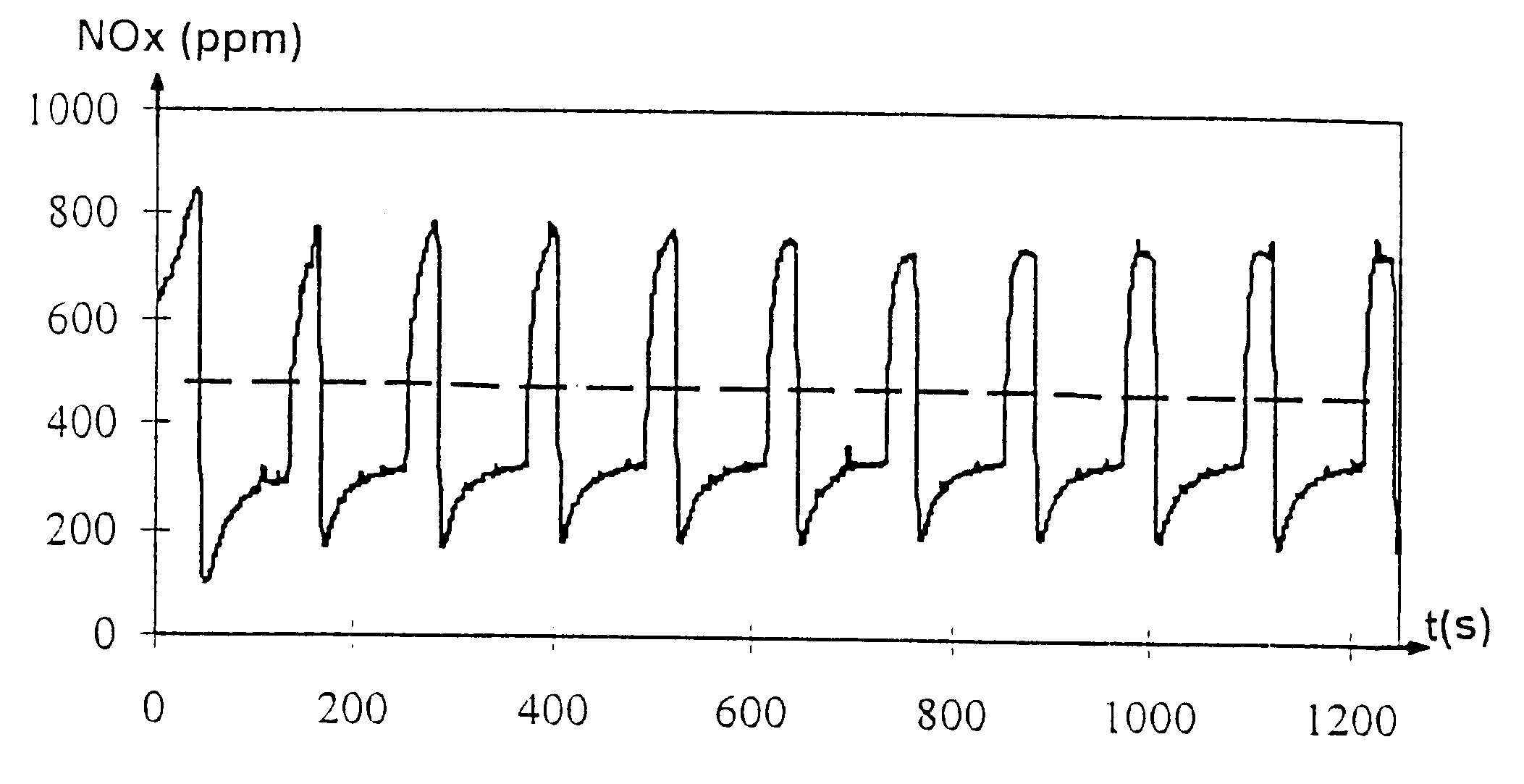Method of removing nitrogen oxides using an ilmenite material
a nitrogen oxide and ilmenite technology, applied in the direction of metal/metal-oxide/metal-hydroxide catalysts, combustible gas purification/modification, arsenic compounds, etc., can solve the problem of inability to meet the requirements of high temperature and exhaust gas, inability to meet the requirements of high temperature and other problems, to achieve the effect of reducing the number of regenerations
- Summary
- Abstract
- Description
- Claims
- Application Information
AI Technical Summary
Benefits of technology
Problems solved by technology
Method used
Image
Examples
examples 1 and 3 to 6
below illustrate the invention without limiting its scope.
example 2
describes a material used in the trapping of NO.sub.x according to the prior art.
By way of comparison, all these catalysts are tested in the laboratory in a microunit with a synthetic gas mixture.
In all the Examples, the designation of the adsorbent phase deposited on the support (or substrate) corresponds, after loss on ignition, to the sum of the constituent elements of the material described in the above procedure, namely the element(s) (A) and (B) contained at the centre of the octahedra of oxygen, and optionally at least one precious metal (C).
The proportions by weight of the different constituent elements of the adsorbent phase are given in percentages in Table 1. The oxygen of the oxide phases is not taken into account in the weight balance.
example 1 (
Invention)
Aqueous sodium hydrogencarbonate solution (1 M) is added to a solution containing 18.2 g of nickel nitrate acetate and 15.7 g of manganese nitrate dissolved in 500 ml of distilled water. The ingredients are mixed for 12 hours and the precipitate obtained is then filtered off, washed and then dried in an oven at 100.degree. C. Before use, it will be calcined in air at 600.degree. C. The technique of X-ray diffraction indicates that the crystal structure of the material obtained is that of ilmenite.
PUM
| Property | Measurement | Unit |
|---|---|---|
| temperature | aaaaa | aaaaa |
| temperature | aaaaa | aaaaa |
| specific surface area | aaaaa | aaaaa |
Abstract
Description
Claims
Application Information
 Login to View More
Login to View More - R&D
- Intellectual Property
- Life Sciences
- Materials
- Tech Scout
- Unparalleled Data Quality
- Higher Quality Content
- 60% Fewer Hallucinations
Browse by: Latest US Patents, China's latest patents, Technical Efficacy Thesaurus, Application Domain, Technology Topic, Popular Technical Reports.
© 2025 PatSnap. All rights reserved.Legal|Privacy policy|Modern Slavery Act Transparency Statement|Sitemap|About US| Contact US: help@patsnap.com


